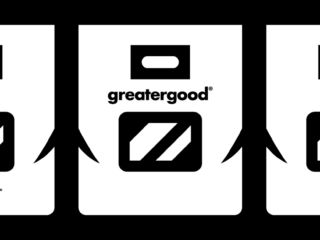In developing a packaging design brief, the fundamentals can be distilled down to Simplicity, Clarity & Communication, Shelf Appeal, and Longevity/Versatility.
We can create packaging which looks great on shelf and connects with an audience – but how can we continue to stimulate and create a multisensory experience which resonates upon contact and post-purchase.
The opening sound and scent of a new Apple gadget, the refreshing crack of a drinks can, the sound of a champagne cork popping. These experiences have been designed as part of a multi-sensory approach to packaging excellence.
Here we take a look at several ways you can add a multi-sensory design approach to your packaging project through the use of:
- Design
- Shape & Format
- Texture
- Sound
- Smell
Design
- Thermochromic hot and cold inks
Long favoured by the drinks industry – thermochromic inks change upon cold or heat making them great for showing when a drink is chilled to perfection. They also add an interactive element to designs as ink can ‘disappear’ with the subtle heat from touch. - Hot and cold foils
(also see: Food Packaging Design Finishes For Retail Success) - Embossing and debossing
(also see: Food Packaging Design Finishes For Retail Success) - UV Gloss and highlights
(also see: Food Packaging Design Finishes For Retail Success)

Shape & Format
- Opening & Closing mechanisms
Opening and closing mechanisms involve direct participation in the packaged good and can be approached in a breadth of memorable ways. Just think of the addictive nature of popping a Pringles can, and how this becomes part of the brand experience (once you pop you just can’t stop). - Opening seals
Likewise, opening devices can convey a sense of freshness and quality – a tactic which has worked for the tea and coffee market for some time. Think – coffee valves on bags, ring pull tin openers on coffee jars – or the distinctive wrapper of a Kit Kat. - Shape, Curves & Grips (Ergonomics)
Adding curves to structural packaging can make it feel more delicate and human – whereas solid lines can imply strength and robustness. The use of unique curves and grips can become a memorable and lucrative brand asset. From fragrance to sauce bottles – brands fight to own the most unique, functional shapes which push the limits of design. - Physical weight
The physical weight of a packaged object can also give implications of its quality and add to cues of a premium product. - Before/After opening
On opening does the packaging become interactive? This happens often with children’s toy packaging opening up and becoming something the child can play with or a scene to be used. Likewise, food packaging can often open up to form a tray for eating on the go.

Texture
- Textured and hammered papers
There are countless options to choose from when selecting paper stocks from soft touch, to satin and gloss – all textures have different benefits and associations. - Diecutting
(also see: Food Packaging Design Finishes For Retail Success) - Embossing and debossing
(also see: Food Packaging Design Finishes For Retail Success)

Sound
- Opening seals
We mentioned the benefits of opening seals earlier on – specifically with sound how can the material you’re using enhance the opening experience? - Opening & Closing mechanisms
Does your product make a sound when it opens and closes? Could this be enhanced to sound louder, or become softer to compliment your product?

Smell
- Scents as adhesives
In products where scent is nearly completely lost (frozen foods etc) – manufacturers have managed to replicate scents contained in packaging adhesives, releasing a scent upon opening. - Scents hidden within packaging
An alternate approach sees scents encapsulated in places like the lids of ice cream tubs, and in the neck of drinks bottles.

Although multi-sensory packaging design is still in its infancy, some of our favourite and most known packaging designs of all time have employed a sensory approach to their advantage. With the growth of new technologies in printing, and the advancement of AR and VR – this is definitely a unique space to watch unfold.

















Leave a Reply